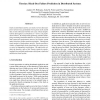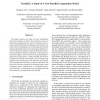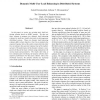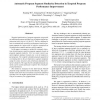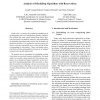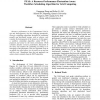IPPS
2007
IEEE
14 years 5 months ago
2007
IEEE
Faults in distributed systems can result in errors that manifest in several ways, potentially even in parts of the system that are not collocated with the root cause. These manife...
IPPS
2007
IEEE
14 years 5 months ago
2007
IEEE
Over the years reconfigurable computing devices such as FPGAs have evolved from gate-level glue logic to complex reprogrammable processing architectures. However, the tools used f...
IPPS
2007
IEEE
14 years 5 months ago
2007
IEEE
This paper proposes the study of a new computation model that attempts to address the underlying sources of performance degradation (e.g. latency, overhead, and starvation) and th...
IPPS
2007
IEEE
14 years 5 months ago
2007
IEEE
Although algorithms that employ dynamic reconfiguration are extremely fast, they need the underlying architecture to change structure very rapidly, possibly at each step of the c...
IPPS
2007
IEEE
14 years 5 months ago
2007
IEEE
IPPS
2007
IEEE
14 years 5 months ago
2007
IEEE
In the paper we present a new approach based on application of neural networks to detect SQL attacks. SQL attacks are those attacks that take advantage of using SQL statements to ...
IPPS
2007
IEEE
14 years 5 months ago
2007
IEEE
In this paper, we review two existing static load balancing schemes based on M/M/1 queues. We then use these schemes to propose two dynamic load balancing schemes for multi-user (...
IPPS
2007
IEEE
14 years 5 months ago
2007
IEEE
Targeted optimization of program segments can provide an additional program speedup over the highest default optimization level, such as -O3 in GCC. The key challenge is how to au...
IPPS
2007
IEEE
14 years 5 months ago
2007
IEEE
IPPS
2007
IEEE
14 years 5 months ago
2007
IEEE
Resource performance in the Computational Grid is not only heterogeneous, but also changing dynamically. However scheduling algorithms designed for traditional parallel and distri...
